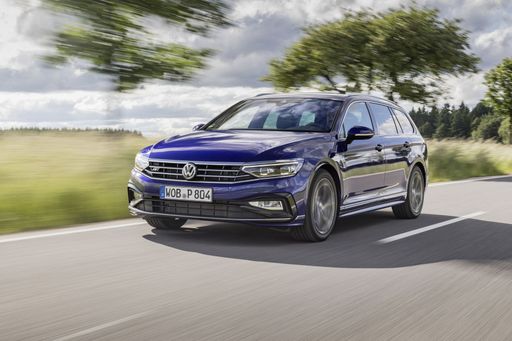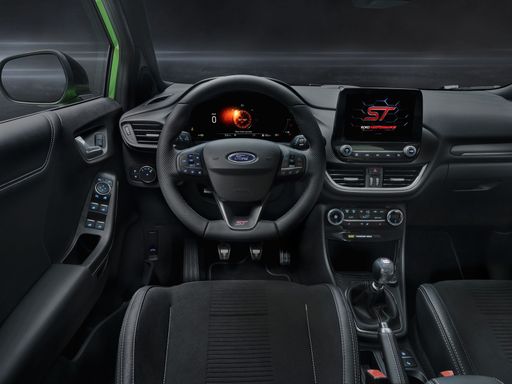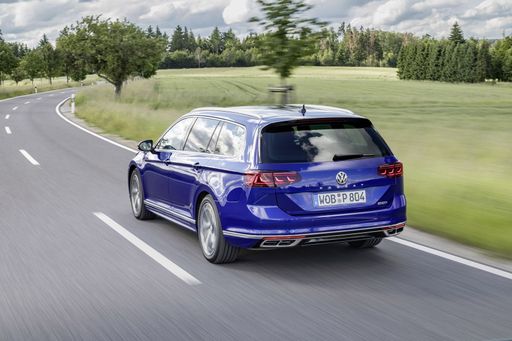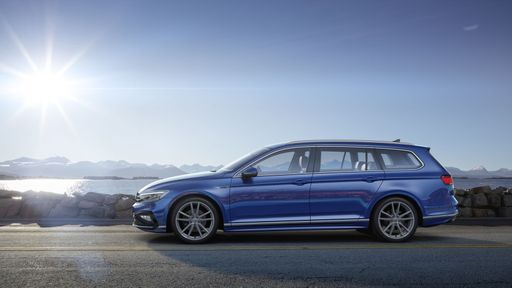Ford Puma vs VW Passat – Performance, range & efficiency compared
Everyday use, family trips or long-distance drives – here’s where the differences show.
Discover whether Ford Puma or VW Passat fits your lifestyle better.
Costs and Efficiency:
When it comes to price and running costs, the biggest differences usually appear. This is often where you see which car fits your budget better in the long run.
Ford Puma has a significantly advantage in terms of price – it starts at 24800 £, while the VW Passat costs 35700 £. That’s a price difference of around 10963 £.
Fuel consumption also shows a difference: VW Passat manages with 0.30 L and is therefore significantly more efficient than the Ford Puma with 5.40 L. The difference is about 5.10 L per 100 km.
As for range, the Ford Puma performs decisively better – achieving up to 376 km, about 243 km more than the VW Passat.
Engine and Performance:
Under the bonnet, it becomes clear which model is tuned for sportiness and which one takes the lead when you hit the accelerator.
When it comes to engine power, the VW Passat has a distinct edge – offering 272 HP compared to 168 HP. That’s roughly 104 HP more horsepower.
In acceleration from 0 to 100 km/h, the VW Passat is distinct quicker – completing the sprint in 5.80 s, while the Ford Puma takes 7.40 s. That’s about 1.60 s faster.
In terms of top speed, the VW Passat performs somewhat better – reaching 250 km/h, while the Ford Puma tops out at 210 km/h. The difference is around 40 km/h.
There’s also a difference in torque: VW Passat pulls noticeable stronger with 400 Nm compared to 290 Nm. That’s about 110 Nm difference.
Space and Everyday Use:
Cabin size, boot volume and payload all play a role in everyday practicality. Here, comfort and flexibility make the difference.
Both vehicles offer seating for 5 people.
In curb weight, Ford Puma is somewhat lighter – 1316 kg compared to 1573 kg. The difference is around 257 kg.
In terms of boot space, the VW Passat offers distinct more room – 690 L compared to 523 L. That’s a difference of about 167 L.
In maximum load capacity, the VW Passat performs clearly perceptible better – up to 1920 L, which is about 637 L more than the Ford Puma.
When it comes to payload, VW Passat slightly takes the win – 577 kg compared to 469 kg. That’s a difference of about 108 kg.
Who wins the race?
The VW Passat proves to be is largely superior and therefore becomes our DriveDuel Champion!
VW Passat is the better all-rounder in this comparison.

VW Passat
Ford Puma
The Ford Puma presents itself as a stylish compact SUV with a distinctive design that combines practicality with a dynamic driving experience. Its sleek lines and sporty aesthetics make it stand out on the road, while the interior offers a comfortable and tech-savvy environment. With an emphasis on efficiency and a smooth drive, the Ford Puma is well-suited for both urban commutes and countryside adventures.
details @ puma.fordpresskits.com
@ puma.fordpresskits.com
 @ puma.fordpresskits.com
@ puma.fordpresskits.com
 @ puma.fordpresskits.com
@ puma.fordpresskits.com
 @ puma.fordpresskits.com
@ puma.fordpresskits.com
VW Passat
The VW Passat is a staple in the family saloon segment, known for its refined design and practicality. It effortlessly combines a comfortable ride with a spacious interior, making it a popular choice for long journeys. The cabin features high-quality materials and an intuitive infotainment system, providing a premium feel without sacrificing user-friendliness.
details @ volkswagen-newsroom.com
@ volkswagen-newsroom.com
 @ volkswagen-newsroom.com
@ volkswagen-newsroom.com
 @ volkswagen-newsroom.com
@ volkswagen-newsroom.com
 @ volkswagen-newsroom.com
@ volkswagen-newsroom.com

|

|
|
|
|
Costs and Consumption |
|
|---|---|
|
Price
24800 - 36300 £
|
Price
35700 - 58500 £
|
|
Consumption L/100km
5.4 - 5.9 L
|
Consumption L/100km
0.3 - 8 L
|
|
Consumption kWh/100km
13.1 - 13.9 kWh
|
Consumption kWh/100km
-
|
|
Electric Range
361 - 376 km
|
Electric Range
124 - 133 km
|
|
Battery Capacity
43 kWh
|
Battery Capacity
19.70 kWh
|
|
co2
0 - 135 g/km
|
co2
7 - 181 g/km
|
|
Fuel tank capacity
42 L
|
Fuel tank capacity
45 - 66 L
|
Dimensions and Body |
|
|---|---|
|
Body Type
SUV
|
Body Type
Estate
|
|
Seats
5
|
Seats
5
|
|
Doors
5
|
Doors
5
|
|
Curb weight
1316 - 1563 kg
|
Curb weight
1573 - 1858 kg
|
|
Trunk capacity
456 - 523 L
|
Trunk capacity
510 - 690 L
|
|
Length
4186 - 4226 mm
|
Length
4917 mm
|
|
Width
1805 mm
|
Width
1849 mm
|
|
Height
1550 - 1555 mm
|
Height
1521 mm
|
|
Max trunk capacity
1216 - 1283 L
|
Max trunk capacity
1770 - 1920 L
|
|
Payload
367 - 469 kg
|
Payload
501 - 577 kg
|
Engine and Performance |
|
|---|---|
|
Engine Type
Electric, Petrol MHEV
|
Engine Type
Plugin Hybrid, Petrol, Petrol MHEV, Diesel
|
|
Transmission
Automatic, Manuel
|
Transmission
Automatic
|
|
Transmission Detail
Reduction Gearbox, Manual Gearbox, Dual-Clutch Automatic
|
Transmission Detail
Dual-Clutch Automatic
|
|
Drive Type
Front-Wheel Drive
|
Drive Type
Front-Wheel Drive, All-Wheel Drive
|
|
Power HP
125 - 168 HP
|
Power HP
122 - 272 HP
|
|
Acceleration 0-100km/h
7.4 - 9.8 s
|
Acceleration 0-100km/h
5.8 - 10.7 s
|
|
Max Speed
160 - 210 km/h
|
Max Speed
212 - 250 km/h
|
|
Torque
170 - 290 Nm
|
Torque
250 - 400 Nm
|
|
Number of Cylinders
3
|
Number of Cylinders
4
|
|
Power kW
92 - 124 kW
|
Power kW
90 - 200 kW
|
|
Engine capacity
999 cm3
|
Engine capacity
1498 - 1984 cm3
|
General |
|
|---|---|
|
Model Year
2025
|
Model Year
2024 - 2025
|
|
CO2 Efficiency Class
A, D
|
CO2 Efficiency Class
B, G, D, E
|
|
Brand
Ford
|
Brand
VW
|
Is the Ford Puma offered with different drivetrains?
The Ford Puma is offered with Front-Wheel Drive.
The prices and data displayed are estimates based on German list prices and may vary by country. This information is not legally binding.
